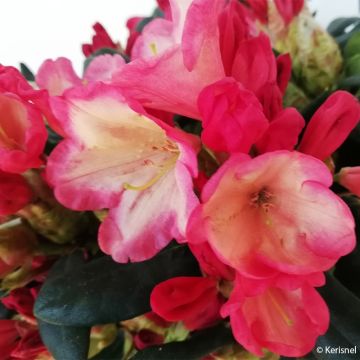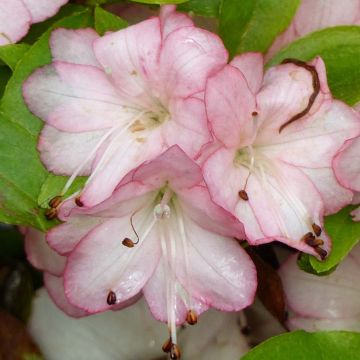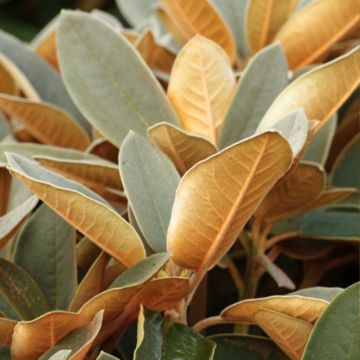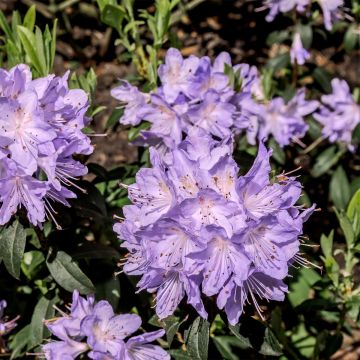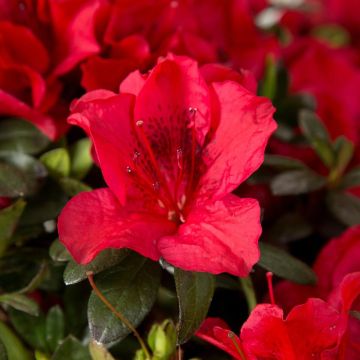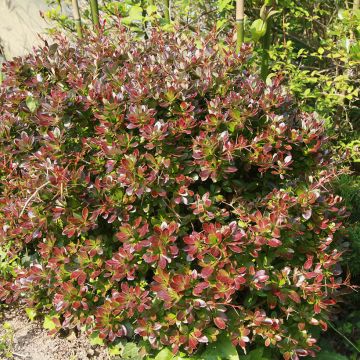Shipping country and language
Your country of residence may be:
Your country of residence is:
For a better user experience on our website, you can select:
Your shipping country:
Andorra
Austria
Belgium
Bulgaria
Canada
Chile
Croatia
Cyprus
Czechia
Denmark
Estonia
Finland
France
Germany
Greece
Hungary
Iceland
Ireland
Italy
Latvia
Lithuania
Luxembourg
Malta
Monaco
Netherlands
Poland
Portugal
Romania
Slovakia
Slovenia
Spain
Sweden
Switzerland
United Kingdom
We only deliver seed and bulb products to your country. If you add other products to your basket, they cannot be shipped.
Language:
French
German
Spanish
English
My Account
Hello
My wish lists
Plantfit
Log in / Register
Existing customer?
New customer?
Create an account to track your orders, access our customer service and, if you wish, make the most of our upcoming offers.
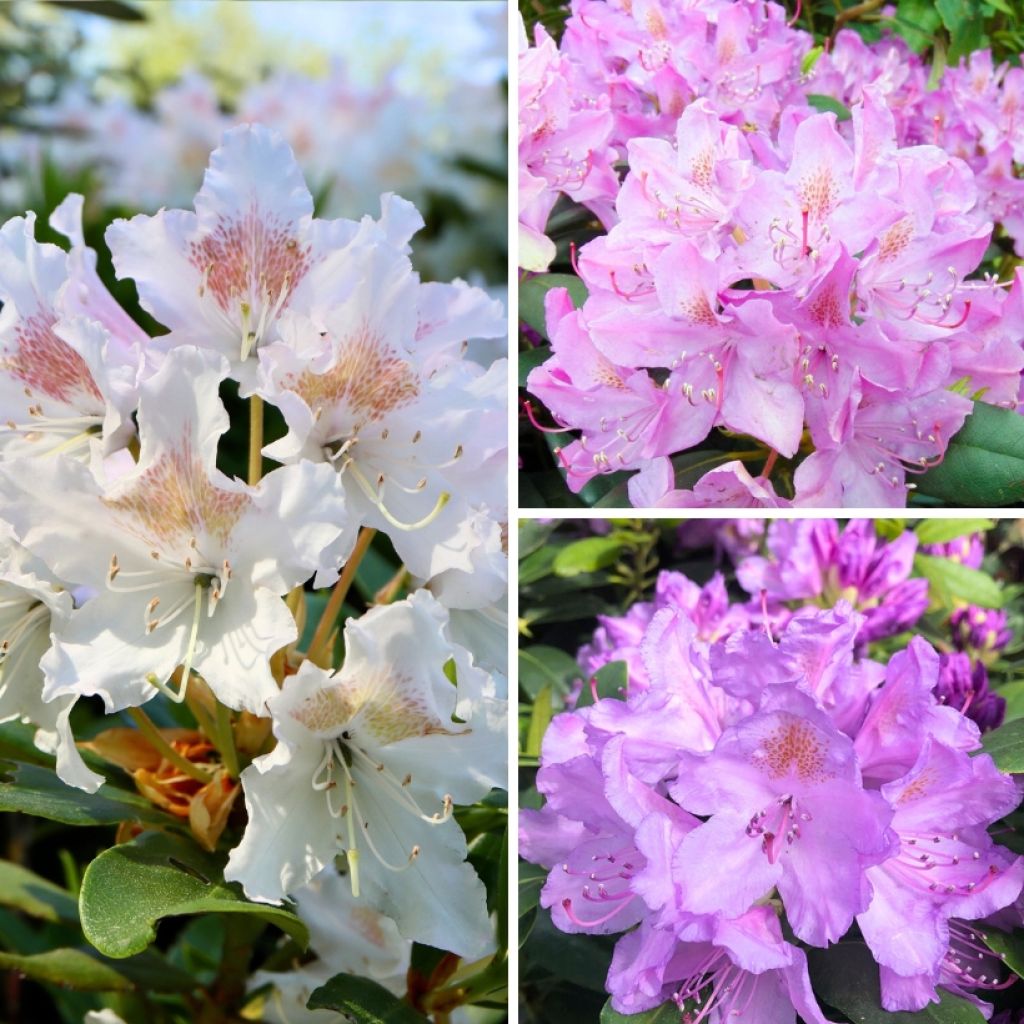

Rhododendron Three Sisters
Rhododendron Three Sisters
Rhododendron x hybrida Three Sisters®
Order in the next for dispatch today!
Dispatch by letter from €3.90.
Delivery charge from €5.90 Oversize package delivery charge from €6.90.
More information
This item is not available in your country.
Schedule delivery date,
and select date in basket
This plant carries a 24 months recovery warranty
More information
We guarantee the quality of our plants for a full growing cycle, and will replace at our expense any plant that fails to recover under normal climatic and planting conditions.
From €5.90 for pickup delivery and €6.90 for home delivery
Express home delivery from €8.90.
Does this plant fit my garden?
Set up your Plantfit profile →
Description
The Rhododendron hybrid 'Three Sisters' is an alliance of three excellent hybrid varieties grown in the same pot, forming a large bush. In spring, the plant is covered with large flowers that create a magnificent tricolour effect in shades of pinkish-purple, lilac mauve, and white. Vigorous and highly floriferous, the plant is adorned with abundant evergreen foliage that remains attractive throughout the year. It is a hardy, vigorous trio that is relatively easy to grow for a 'rhodo'. It will thrive in the ground or in a large container, in acidic, rich, moist, and well-drained soil.
Rhododendrons are plants from the Ericaceae family, like heathers. The selection called 'Three Sisters' is composed of 3 different varieties.
-
Rhododendron (x) catawbiense 'Grandiflorum': a vigorous variety with relatively fast growth. It has generous flowering from late May to mid-June, with large spherical clusters of luxuriant flowers. The flower colour, a mauve punctuated with golden yellow and brown, is particularly vibrant in the shade.
-
Rhododendron (x) catawbiense ‘Roseum Elegans’: a variety similar to the previous one, but slightly less vigorous. The flowers open as a pinkish-purple shade washed with fuchsia and speckled with red at the centre. Over time, they turn more mauve and reveal a throat speckled with bronze, occupied by long curved stamens of deep pink.
-
Rhododendron hybrid 'Cunningham's White': a beautiful, vigorous, and very healthy plant, but more compact than the other two. This old Scottish variety, commonly used as a rootstock, offers remarkable flowering. Its beautiful white flowers, washed with pink on the edges and with a heavily streaked purple-brown throat, open in clusters of 20 cm. It is not uncommon to see a few flowers in September.
Together, these three rhododendrons form a large, densely branched bush with a dense habit, reaching approximately 3 m in all directions in good growing conditions and in the ground. In a container, its dimensions will be more modest. The Rhododendron has large elliptical leaves that are dark green and glossy on the upper side, and they remain persistent in winter. Around mid-May, for approximately three weeks, large spherical clusters or corymbs of flower buds bloom at the ends of the branches. They open into large funnel-shaped flowers with petals that are more or less undulate at the edges. The flower's centre is adorned with long stamens.
The Rhododendron 'Three Sisters' is a hardy plant, tolerating temperatures down to at least -15°C. Although they prefer partial shade, hybrid Rhododendrons can tolerate morning sun as long as it is not scorching and their roots remain cool. With its vigour and remarkable flowering, this trio will enhance a partially shaded area of the garden, alongside ferns, hostas, Pieris, Azaleas, or other rhododendrons from the same group, creating stunning patchworks of textures and colours in spring.
Plant habit
Flowering
Foliage
Botanical data
Rhododendron
x hybrida
Three Sisters®
Ericaceae
Cultivar or hybrid
Other Small Rhododendron
Planting and care
Plant the 'Three Sisters' Rhododendron in a partially shaded or even morning sun position, protected from cold and drying winds, in cool, humus-rich, and light soil, with a tendency towards acidity or neutrality. Like all plants in the Ericaceae family, it does not tolerate alkaline soils or heavy soils that become waterlogged in winter. If the soil remains moist in summer, this rhododendron will also tolerate morning sun exposure. Avoid planting at its base, as its shallow roots do not tolerate competition from other plants, especially for water resources.
Dig a hole three times larger than the pot. Soak the root ball in non-limestone water and plant the bush at the collar level, in a mixture composed of 1/4 turf, leaf compost, gravel or pumice, and loam. Water thoroughly and keep the soil moist in summer. Azaleas and Rhododendrons have a shallow root system. As a result, they are susceptible to long periods of drought. That is why a humus-rich soil and abundant watering during dry periods are recommended. Additionally, this root system is not very strong, so it is essential to lighten heavy soils with draining materials (gravel, pumice, clay pellets) when planting. Apply a mulch of shredded pine bark at the base of the bush every spring to maintain soil moisture and an acidic pH.
Maintenance involves removing faded flowers in summer and clearing dead branches. Azaleas and Rhododendrons can sometimes be attacked by weevils that eat the edges of leaves and rootlets, as well as the infamous "rhododendron beetle," which rarely causes significant damage. Effective organic solutions are available today against weevils. Yellowing of leaves (chlorosis) in Rhododendrons indicates poor assimilation of iron in the soil and can lead to premature plant death. While limestone is often the cause, poorly drained soil or deeply planted root balls can also explain the phenomenon.
"Rhodos" thrive in cooler climates when planted in limestone-free soil and a humid environment. Their cultivation in hotter and drier climates is generally doomed to failure in the long run, despite all attempts to acclimatise them.
Planting period
Intended location
Care
This item has not been reviewed yet - be the first to leave a review about it.
Evergreen shrubs
Haven't found what you were looking for?
Hardiness is the lowest winter temperature a plant can endure without suffering serious damage or even dying. However, hardiness is affected by location (a sheltered area, such as a patio), protection (winter cover) and soil type (hardiness is improved by well-drained soil).

Photo Sharing Terms & Conditions
In order to encourage gardeners to interact and share their experiences, Promesse de fleurs offers various media enabling content to be uploaded onto its Site - in particular via the ‘Photo sharing’ module.
The User agrees to refrain from:
- Posting any content that is illegal, prejudicial, insulting, racist, inciteful to hatred, revisionist, contrary to public decency, that infringes on privacy or on the privacy rights of third parties, in particular the publicity rights of persons and goods, intellectual property rights, or the right to privacy.
- Submitting content on behalf of a third party;
- Impersonate the identity of a third party and/or publish any personal information about a third party;
In general, the User undertakes to refrain from any unethical behaviour.
All Content (in particular text, comments, files, images, photos, videos, creative works, etc.), which may be subject to property or intellectual property rights, image or other private rights, shall remain the property of the User, subject to the limited rights granted by the terms of the licence granted by Promesse de fleurs as stated below. Users are at liberty to publish or not to publish such Content on the Site, notably via the ‘Photo Sharing’ facility, and accept that this Content shall be made public and freely accessible, notably on the Internet.
Users further acknowledge, undertake to have ,and guarantee that they hold all necessary rights and permissions to publish such material on the Site, in particular with regard to the legislation in force pertaining to any privacy, property, intellectual property, image, or contractual rights, or rights of any other nature. By publishing such Content on the Site, Users acknowledge accepting full liability as publishers of the Content within the meaning of the law, and grant Promesse de fleurs, free of charge, an inclusive, worldwide licence for the said Content for the entire duration of its publication, including all reproduction, representation, up/downloading, displaying, performing, transmission, and storage rights.
Users also grant permission for their name to be linked to the Content and accept that this link may not always be made available.
By engaging in posting material, Users consent to their Content becoming automatically accessible on the Internet, in particular on other sites and/or blogs and/or web pages of the Promesse de fleurs site, including in particular social pages and the Promesse de fleurs catalogue.
Users may secure the removal of entrusted content free of charge by issuing a simple request via our contact form.
The flowering period indicated on our website applies to countries and regions located in USDA zone 8 (France, the United Kingdom, Ireland, the Netherlands, etc.)
It will vary according to where you live:
- In zones 9 to 10 (Italy, Spain, Greece, etc.), flowering will occur about 2 to 4 weeks earlier.
- In zones 6 to 7 (Germany, Poland, Slovenia, and lower mountainous regions), flowering will be delayed by 2 to 3 weeks.
- In zone 5 (Central Europe, Scandinavia), blooming will be delayed by 3 to 5 weeks.
In temperate climates, pruning of spring-flowering shrubs (forsythia, spireas, etc.) should be done just after flowering.
Pruning of summer-flowering shrubs (Indian Lilac, Perovskia, etc.) can be done in winter or spring.
In cold regions as well as with frost-sensitive plants, avoid pruning too early when severe frosts may still occur.
The planting period indicated on our website applies to countries and regions located in USDA zone 8 (France, United Kingdom, Ireland, Netherlands).
It will vary according to where you live:
- In Mediterranean zones (Marseille, Madrid, Milan, etc.), autumn and winter are the best planting periods.
- In continental zones (Strasbourg, Munich, Vienna, etc.), delay planting by 2 to 3 weeks in spring and bring it forward by 2 to 4 weeks in autumn.
- In mountainous regions (the Alps, Pyrenees, Carpathians, etc.), it is best to plant in late spring (May-June) or late summer (August-September).
The harvesting period indicated on our website applies to countries and regions in USDA zone 8 (France, England, Ireland, the Netherlands).
In colder areas (Scandinavia, Poland, Austria...) fruit and vegetable harvests are likely to be delayed by 3-4 weeks.
In warmer areas (Italy, Spain, Greece, etc.), harvesting will probably take place earlier, depending on weather conditions.
The sowing periods indicated on our website apply to countries and regions within USDA Zone 8 (France, UK, Ireland, Netherlands).
In colder areas (Scandinavia, Poland, Austria...), delay any outdoor sowing by 3-4 weeks, or sow under glass.
In warmer climes (Italy, Spain, Greece, etc.), bring outdoor sowing forward by a few weeks.

